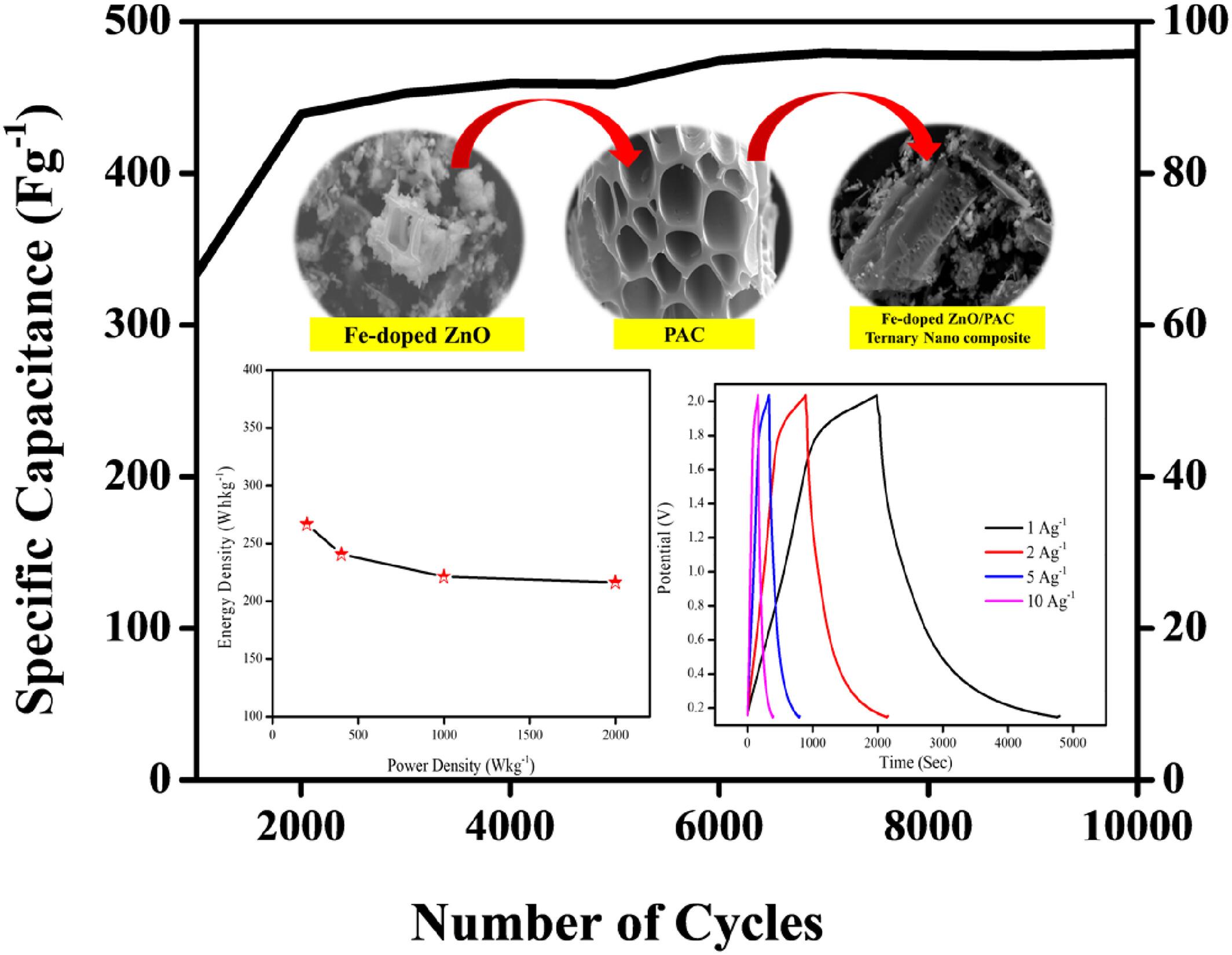Low-Temperature Annealed Fe-Doped ZnO on Bamboo-Derived Porous Carbon: High-Performance Ternary Nanocomposite for Asymmetric Supercapacitors With Superior Capacitance and Stability
Abstract
In this study, we present a strategy of synergistic lowest-temperature annealing, and solvent-casting to synthesize Fe-doped ZnO anchored porous activated carbon-based ternary nanocomposite for asymmetric supercapacitor applications with an extended potential window of 1.2 V. The prepared nanocomposite shows a “stacked-table” like morphology with pores in the surface and walls of the carbon matrix. The incorporation of Fe-doped ZnO onto the carbon skeleton improves the conductivity by controlling morphology and specific capacitances through fast electron transfer property. The prepared nanocomposite delivers a specific capacitance of ~930 Fg−1 at 1 Ag−1. The fabricated ASC device delivers the specific capacitance of ~480 Fg−1, energy and power density of ~266.6 Whkg−1 and ~1998.5 Wkg−1 at a current of 1 and 10 Ag−1 respectively, respectively maintaining its remarkable capacitance of about 98.5% across 10 000 cycles. This superior performance can be attributed to the significant contact between the positive/negative electrode and the electrolyte which reduces the pathway of the diffused ions and enhances the conductivity of the porous carbon material aiding the electrons to travel towards the current collector. The low-temperature annealing and solvent casting strategy pave the way for the use of facile synthesis of Fe-doped ZnO as an efficient material for high-power supercapacitor applications.


 求助内容:
求助内容: 应助结果提醒方式:
应助结果提醒方式:


